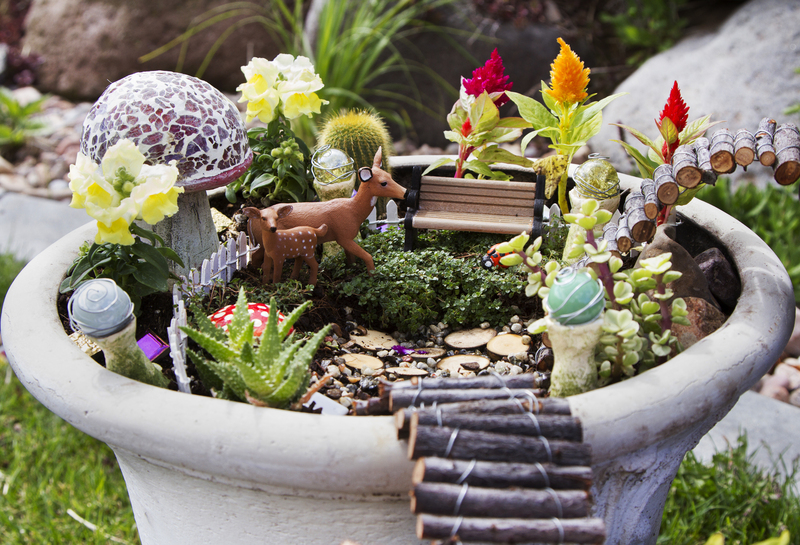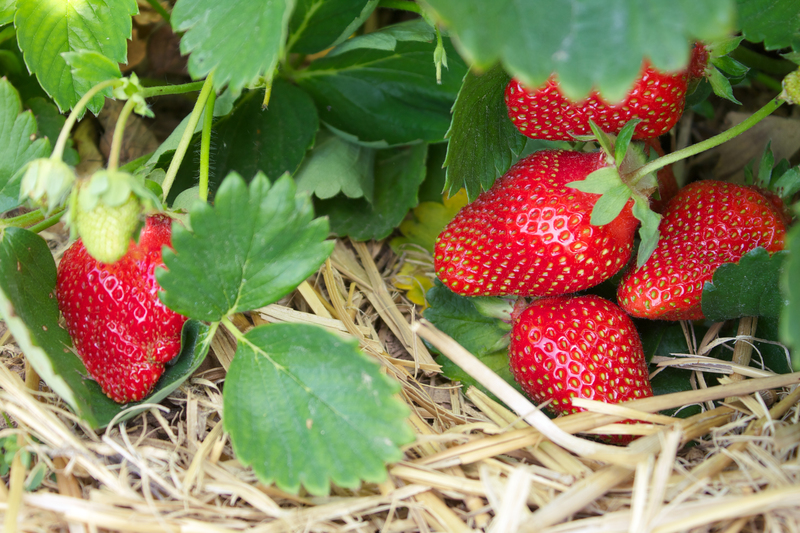Safe and Effective Approaches to Tree Stump Removal
Tree stumps left behind after felling can be unsightly, pose safety hazards, and even interfere with new landscaping plans. Whether you're a homeowner tackling your own yard or a professional landscaper, understanding safe and effective methods for removing tree stumps is essential. In this comprehensive guide, we'll cover a variety of tree stump removal techniques, emphasizing safety, efficiency, and environmental care. From manual labor to specialized machinery and eco-friendly decomposition methods, read on to discover the best solution for your unique situation.

Why Is Tree Stump Removal Important?
Leaving a tree stump behind after removing a tree can cause several problems. Not only can stumps be visually displeasing, but they can also:
- Become trip hazards, especially for children and the elderly
- Attract pests and insects such as termites, ants, and beetles
- Cause fungal growth that may spread to healthy trees and plants
- Regenerate new shoots, leading to unwanted tree regrowth
- Obstruct mowing and other garden maintenance tasks
Given these risks, removing tree stumps safely and efficiently is a priority for property owners who want to maintain a tidy, safe, and healthy landscape.
Assessing Your Stump Removal Needs
Before committing to any particular tree stump elimination technique, consider the following factors:
- Stump size and type of tree: Some tree species have deeper, more extensive roots than others.
- Location: Proximity to buildings, driveways, sidewalks, or underground utilities impacts which removal methods are feasible.
- Time frame: Are you looking for immediate removal, or can you wait several months for natural decay?
- Budget: Some methods are labor-intensive and low-cost; others require renting or hiring professional equipment.
Safe and Effective Tree Stump Removal Methods
1. Manual Tree Stump Removal
Manual removal remains a tried-and-true approach for small to medium-sized stumps, especially if you're comfortable with physical labor and basic tools.
- Tools Needed: Shovel, mattock or grub hoe, axe, hand saw, and loppers.
-
Process:
- Dig around the base of the stump to expose roots.
- Use the mattock, axe, or loppers to sever roots.
- Continue digging and cutting until the main roots are free, then leverage the stump out of the ground.
Removal by hand is environmentally friendly and requires no chemicals or machinery, but is best suited to stumps less than 12 inches in diameter. Always wear sturdy gloves, goggles, and steel-toed boots for safety.
2. Mechanical Tree Stump Removal: Stump Grinding
Stump grinding is one of the most effective and widely used methods for both residential and commercial properties. This process uses a powerful machine to grind the stump down to below ground level, often to a depth of 6-12 inches.
-
Advantages:
- Fast and efficient, especially for large or tough stumps
- Minimal disturbance to surrounding landscape
- Removes surface roots as well as the main stump
-
Considerations:
- Stump grinders can be rented, but they require proper handling and safety precautions.
- Professional stump removal services ensure the job is done safely, especially near utilities.
- Resulting wood chips can be used as mulch or disposed of as green waste.
If you choose to grind stumps yourself, read your machine's manual thoroughly, wear protective eyewear and hearing protection, and ensure the area is clear of children and pets.
3. Chemical Tree Stump Removal
For those seeking a less labor-intensive but time-consuming solution, chemical stump removal offers an alternative. Commercially available stump removal products, often containing potassium nitrate, accelerate natural decomposition.
-
How It Works:
- Drill multiple holes in the stump and fill with the chemical powder.
- Add water to activate the product.
- Over weeks or months, the stump softens and rots, allowing easy removal with basic tools.
-
Advantages:
- Minimal physical labor is required.
- Safe for most landscaping when used as directed.
-
Considerations:
- Not an instant process – can take several weeks or months.
- Careful handling is essential. Store chemicals securely and keep away from children and pets.
- Check label instructions for application details and environmental recommendations.
Tip: For an even more natural approach, you can use Epsom salt rather than commercial stump removers, though the process is similarly slow.
4. Burning the Stump (Controlled Burn Method)
In some cases, burning out a stump can be a practical, cost-effective solution. However, safety and legality are paramount.
-
Preparation:
- Drill holes throughout the stump and pour in kerosene or fuel oil (never gasoline).
- Let the stump soak for several days.
- On a calm day with no nearby flammable materials, ignite the stump and let it smolder.
- Monitor the fire at all times and have water or an extinguisher nearby.
-
Cautions:
- Always check with local fire departments and municipalities for regulations or permit requirements.
- Never burn stumps near structures, trees, or during dry weather concerning fire risk.
Controlled burning is not recommended in densely populated or drought-prone areas, but it can be effective in rural or forested settings with the proper precautions.
5. Natural Decomposition (Letting the Stump Rot)
The most eco-friendly - if slow - method is to allow the stump to break down naturally. You can encourage decomposition by:
- Drilling holes and filling them with a high-nitrogen fertilizer or Epsom salts.
- Keeping the stump moist and covering it with soil, mulch, or compost to stimulate microbial activity.
- Checking periodically and cutting away rotted sections until the stump is level with or below the ground.
This approach produces no waste, uses no chemicals, and provides habitat for fungi, insects, and nearby plants. The main disadvantage: natural tree stump decay can take 1-5 years, depending on the species and weather conditions.
Comparing Different Tree Stump Removal Techniques
| Method | Speed | Cost | Best For | Skill/Safety Concern |
|---|---|---|---|---|
| Manual Removal | Moderate | Low | Small/medium stumps | Heavy labor, sharp tools |
| Stump Grinding | Fast | Medium-High | Most stumps | Machine handling |
| Chemical Removal | Slow | Low | Patience, inaccessible stumps | Chemical handling |
| Burning | Moderate | Low | Rural locations | Fire risk |
| Natural Rot | Very slow | None | Non-urgent, eco-friendly | Time-consuming |
Safety First -- Essential Stump Removal Tips
- Before digging or grinding, call your utility company to mark any underground lines.
- Always wear personal protective equipment (PPE): gloves, safety glasses, sturdy boots, and ear protection if using machinery.
- Keep pets, children, and bystanders at a safe distance from the work area.
- Follow manufacturer instructions for any chemicals, and store products safely out of reach.
- When burning, never leave a fire unattended and observe local fire ordinances.
- Consider hiring an arborist or professional tree removal service for large or complicated stumps, especially those near property or power lines.
Environmental Considerations in Tree Stump Removal
Responsible stump elimination means considering the environmental impact of your chosen method. Here's how:
- Opt for chemical-free or organic methods whenever possible.
- Recycle wood chips from stump grinding as mulch for flower beds or paths.
- Burning should be a last resort due to air pollution and fire risk.
- Letting stumps rot naturally can create valuable wildlife habitat, especially in woodland settings.
Dealing with Tree Roots After Stump Removal
Some removal methods leave behind tree roots, which may cause problems if you plan to replant or landscape the area. Use the following strategies:
- For grinding or manual removal, dig out as many main roots as possible.
- Rake the area to collect any exposed surface roots.
- Apply topsoil and grass seed to encourage new lawn growth or prepare garden beds.
When to Hire Professional Stump Removal Services
While DIY tree stump removal is possible, some scenarios make professional help the safer and more effective choice:
- Large, old, or stubborn stumps with extensive root systems
- Stumps located close to buildings, fences, driveways, or utilities
- Multiple stumps needing removal at once
- Lack of access to appropriate tools, machinery, or labor
- Physical limitations, safety concerns, or inexperience
Certified arborists use specialized equipment and provide trained crews to ensure that all stump removal work is conducted safely and with minimal impact to your property.

Frequently Asked Questions About Safe Tree Stump Removal
Is it better to grind a stump or remove it completely?
Grinding a tree stump is often sufficient and less disruptive to your yard, but complete removal by digging might be necessary if you plan to plant a new tree in the same spot.
How long does chemical stump removal take?
Depending on the method and tree species, chemical solutions break down stumps over 4-12 weeks. This is much slower compared to physical removal or grinding.
Can I plant grass or another tree where the stump was?
Yes, but you should fill the hole with topsoil after removal, and consider removing as many roots as possible for optimal plant health.
Are chemicals used in stump removal harmful?
When used according to labeled instructions, most commercial stump removal products are safe for lawns and gardens. Always avoid contamination of water sources and store safely.
Conclusion: Choosing the Right Approach for Tree Stump Removal
Tree stumps don't have to be permanent fixtures in your landscape. By understanding the safe and effective tree stump removal methods available, you can choose the right approach based on your stump type, location, budget, and environmental priorities. Whether you opt for manual labor, stump grinding, chemical decomposition, burning, or natural decay, always prioritize safety and environmental responsibility.
For complicated or risky removals, don't hesitate to consult a professional tree stump removal service to get the job done fast, thoroughly, and without danger to your property or your loved ones.
Ready to reclaim your yard? With the right knowledge and plan, tree stumps can be safely and effectively removed, leaving your outdoor spaces looking their best!